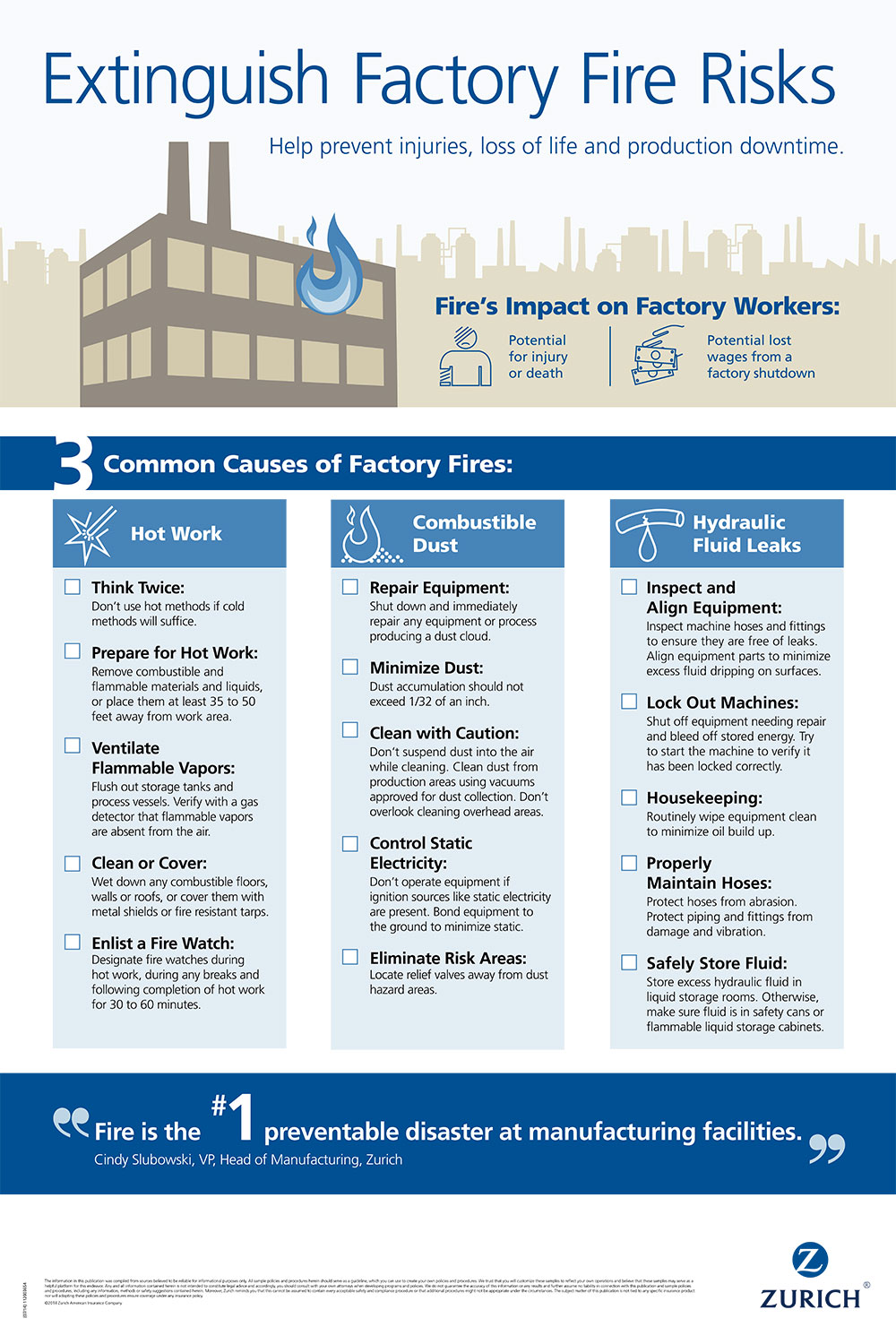Last week was National Fire Prevention Week, which commemorates the Great Chicago Fire of 1871 that killed an estimated 300 people, left 100,000 homeless, and destroyed more than 17,000 structures. In honor of Fire Prevention Week, Zurich presents tips to prevent factory fires.
A factory fire can spell devastating consequences for a company and its employees. A fire at a factory or manufacturing facility can result in loss of life, injured workers, loss of wages from a factory shutdown, and production downtime. According to the National Fire Protection Association (NFPA), property losses at U.S. factories total nearly $1 billion each year.
 Factory fires can be caused by three common factors: hot work, combustible dust, or hydraulic fluid leaks. “Hot work” is defined as any process that can be a source of ignition when flammable material is present, such as welding. Zurich recommends companies don't use hot work if cold methods can be used instead. In instances where hot work is used, Zurich advises to remove combustible and flammable materials from the area and ventilate flammable vapors.
Factory fires can be caused by three common factors: hot work, combustible dust, or hydraulic fluid leaks. “Hot work” is defined as any process that can be a source of ignition when flammable material is present, such as welding. Zurich recommends companies don't use hot work if cold methods can be used instead. In instances where hot work is used, Zurich advises to remove combustible and flammable materials from the area and ventilate flammable vapors.
Recommended For You
Want to continue reading?
Become a Free PropertyCasualty360 Digital Reader
Your access to unlimited PropertyCasualty360 content isn’t changing.
Once you are an ALM digital member, you’ll receive:
- Breaking insurance news and analysis, on-site and via our newsletters and custom alerts
- Weekly Insurance Speak podcast featuring exclusive interviews with industry leaders
- Educational webcasts, white papers, and ebooks from industry thought leaders
- Critical converage of the employee benefits and financial advisory markets on our other ALM sites, BenefitsPRO and ThinkAdvisor
Already have an account? Sign In Now
© 2025 ALM Global, LLC, All Rights Reserved. Request academic re-use from www.copyright.com. All other uses, submit a request to [email protected]. For more information visit Asset & Logo Licensing.








